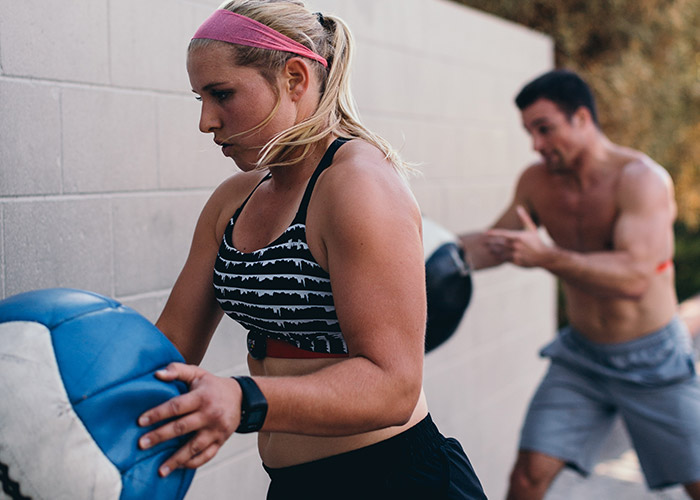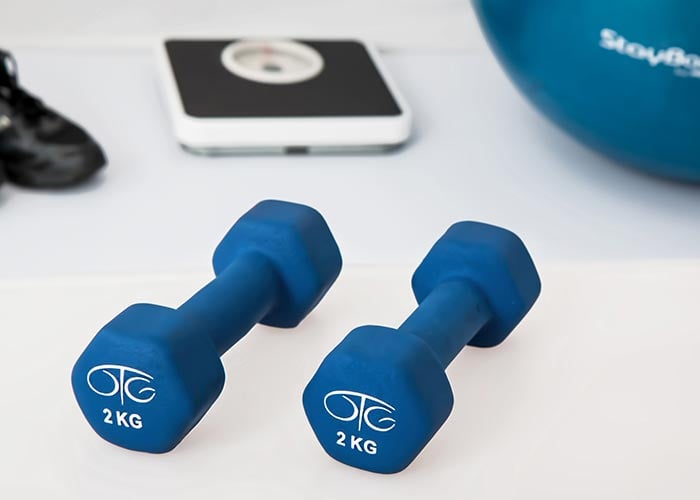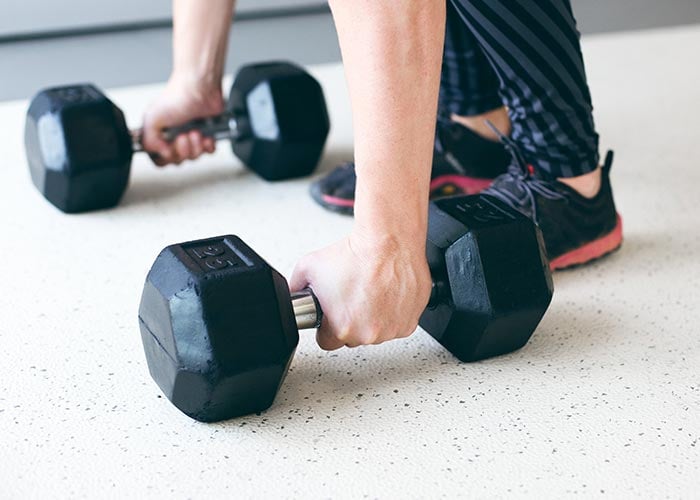Setting Realistic Goals With Myzone
One of the challenges of setting health and fitness related goals is having a solid handle on realistic timelines and expectations.
This blog post provides clarity on realistic timelines and expectations for common health and fitness goals like weight loss, cardiorespiratory endurance, strength and lean mass (muscle mass) gains, and more. One of the most important components of setting realistic goals is knowing your starting point. Make sure you have a solid idea of where you are now to set realistic goals for the future.
Let’s start with the most common health and fitness goal; weight loss.
Weight Loss:
You've probably heard that a 3500 calorie deficit should equal one pound of fat loss. Unfortunately, it’s not quite that straightforward. We can make an effort to burn more calories during our workouts and/or restrict caloric consumption, but even if we dial that into a science, there are other factors at play with weight loss. A few of those factors, some of which are interrelated, are sleep, stress, genetics, hormones, and gender.
If your goals are weight loss related, you'll want to make sure you're putting other lifestyle modifications in place beyond exercise and nutrition. You’ll want to aim for 7 to 9 hours of sleep each night, and you'll want to find stress management techniques that work best for you.
For most individuals, it's realistic to aim for one pound of weight loss per week. This rate of weight loss is sustainable and can help minimize lean mass loss.
That’s another important consideration - fat loss versus weight loss. When we lose weight, we tend to lose both fat mass and lean mass. If you would like to target fat loss more specifically, you'll want to maintain a resistance training routine 2 to 3 days per week to maintain your lean mass as you lose weight.
Summary: It's realistic to aim for a one-pound weight loss per week through exercise and nutrition modification. Managing sleep and stress will also assist in weight loss. Be sure to maintain a resistance training routine to promote lean mass retention.
Lean Mass (Muscle Mass) Gains:
Gaining lean mass also requires lifestyle adjustments beyond exercise and nutrition. You'll want to make sure you're getting plenty of sleep and rest to create an environment that promotes growth and repair. Due to hormonal composition, men generally gain lean mass at a faster rate and quantity than women.
If you're engaging in hypertrophy (muscle size growth) and strength training for all major muscle groups regularly (at least 2 to 3 days per week), and adjusting your caloric consumption to promote weight gain, a realistic expectation is about a quarter of a pound of muscle gain per week. Make sure to map your timeline out accordingly.
You can have your body composition, which is fat mass versus lean mass, assessed in multiple ways. Two of the best methods for body composition analysis are the Bod Pod and the Dual X-Ray Absorptiometry (DXA) scan. However, those methods can be less accessible and more expensive than more common methods like bioelectric impedance analysis (BIA) and measuring skinfolds.
If BIA and skinfold measurements are what you have access to, just make sure the assessment method is consistent (i.e. the same person taking your skinfolds each time) to verify any changes in lean mass.
Summary: Engaging in strength training for a minimum of 2 to 3 days per week and adjusting nutrition appropriately, allows you to set a realistic goal of about a quarter of a pound in lean mass gain per week.
Cardiorespiratory Fitness Improvements:
Two of the most measurable aspects of cardiorespiratory fitness improvements are resting heart rate and recovery heart rate. In general, measurable changes in cardiorespiratory fitness take about 6 to 8 weeks to manifest, however, the more fit you become the longer it can take to see changes and the smaller the changes will be.
Resting heart rate refers to your heart beat in a completely rested state, ideally when sleeping and immediately upon waking. Normal ranges for resting heart rate for adults are between 60 to 100 beats per minute (bpm). As you become more fit, your resting heart rate will decrease because your heart is putting out more blood with each beat (stroke volume) and your blood vessels are becoming more pliable (decreased blood pressure). Depending on the start point of your resting heart rate, you can expect to see a 10 to 30 bpm change over time. Follow these guidelines on how to track resting heart rate with Myzone.
Recovery heart rate refers to the rate at which your heart recovers after a stint of generally high intensity exercise or at the end of your workout. Again, as you become more fit, your heart rate should recover faster in between intervals and at the end of your workout. Assess changes in recovery heart rate by measuring your heart rate after the one minute recovery following a high intensity exercise. We have provided you with a Myzone-specific heart rate recovery assessment here.
Summary: Changes in cardiorespiratory fitness take about 6 to 8 weeks to be measurable. Monitor changes in both resting heart rate and recovery heart rate using your Myzone belt.
Competing Goals:
As you're tackling your 2018 health and fitness goals, keep an eye out for these common pitfalls of competing goals.
Performance Goals vs. Aesthetic Goals: It can be challenging to achieve a performance goal (i.e. take time off of your personal best 5k) and an aesthetic goal (i.e. increasing lean mass by 5 pounds) at the same time. Be sure to choose complementary goals if you have both performance and aesthetic goals set.
Fat Loss vs. Lean Mass Gain: If you are seeking to change your body fat percentage, you can do so by decreasing your fat mass or increasing your lean mass. Typically, loss of fat mass will also be accompanied by some lean mass loss and an increase in lean mass will be accompanied by some increase in fat mass. In general, our bodies are built to be in a mass building mode or mass decreasing mode – we don’t necessarily have the ability to target fat loss while simultaneously gaining lean mass. The best way you can lose fat and maintain and/or gain lean mass is to maintain a healthy nutrition routine in combination with a cardio and resistance training routine.
Improving Strength vs. Improving Cardiorespiratory Endurance: While you can accomplish both of these goals at the same time, it can take longer to see improvements in strength if you're putting in a lot of cardiorespiratory work. Cardio generally puts us into a catabolic (breakdown) state, while strength training puts us into an anabolic (building) state. If you are targeting both strength and cardio improvements at the same time, we recommend that you perform them on alternate days and/or perform the mode that is highest priority first if doing cardio and strength training concurrently.
Summary: Set yourself up for goal achievement by minimizing any competing goals. Prioritize your goals and attack the top priorities first.
Keep moving forward!
We wish you all the best with your health and fitness goals for this year!
Remember to use the hashtags #effortrewarded and #myzonemoves when you post your workout pics, and don’t forget to add your workout photos to your Myzone moves in the app!
Share this
You May Also Like
These Related Stories

3 Tips to Maximize Gamification With Fitness Trackers

Gamify Your Fitness - 3 Partner Exercises






